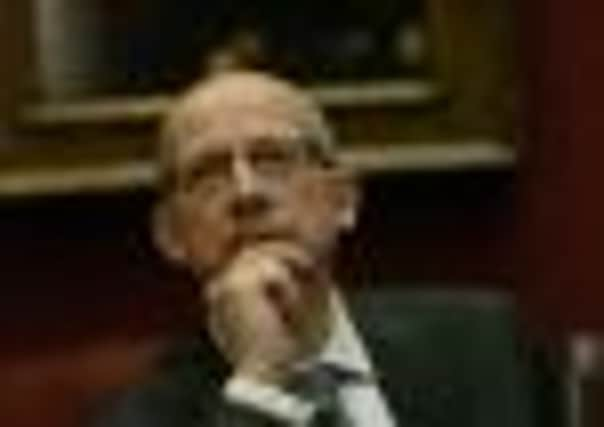John Leighton: Every picture in transformed gallery tells story of Scotland


This has been an extraordinary period for museums and galleries in Scotland. In little over a year, we have seen the opening of the new Burns Museum in Alloway, the arrival of the spectacular Riverside Museum for Transport in Glasgow and the refurbishment of the National Museum here in Edinburgh.
There has been a fabulous response to these new attractions and both the Riverside and National Museums have already welcomed more than one million visitors each since they opened their doors. Now, it is the turn of the Scottish National Portrait Gallery, which reopens today after a major overhaul and with brand new facilities, attractive spaces and new exhibitions.
Advertisement
Hide AdAdvertisement
Hide AdThis is all good news for our cultural life and certainly welcome news for the local economy. Scotland’s museums and galleries play a crucial role in encouraging tourism, improving our skills base, driving the creative industries and helping to attract inward investment. History and culture count among the most popular reasons to visit Scotland and the quality and diversity of our museums is central to this. According to figures published earlier this year, the total worth of museums and galleries to the Scottish economy can be calculated at more than £800 million every year. Museums and galleries apparently generate £78.9m in direct and £44.18m in indirect revenues for the country and are estimated to be responsible for 3688 tourism-related jobs. These figures will surely have increased significantly following the recent museum openings.


With the Portrait Gallery, our aim is to increase the audiences by at least 50 per cent to some 300,000 visitors a year. In the past this institution might have seemed somewhat marginal to the cultural life of Edinburgh. Sited on the edge of the New Town and seemingly off the tourist trail, our surveys showed that, of all the National Gallery sites, the Portrait Gallery attracted the fewest foreign visitors. The building looked tired and shabby, with gloomy interiors and barely half of its galleries open to the public.
Today, that location close to the revitalised St Andrew Square and with excellent transport links, looks more of an asset than a hindrance. The exterior of the building, a masterpiece of Arts and Crafts architecture, is gleaming and now has extra breathing space with a widened pavement to its front. But it is inside that visitors will see the major transformation. The architects, Page and Park, have demolished their way back to the original grandeur of the 19th-century building, removing lowered ceilings, blocked up windows and creating fantastic light-filled spaces for the collections. In purely statistical terms we can express this as 60 per cent more space for the displays with 606 more artworks on show than before. In reality it seems quite simply like a new national art gallery.
It may seem like a strange admission from someone charged with their care, but is only in the past few months that I have come to fully realise the full richness and depth of the Portrait Gallery’s collection. So, for example, I knew that we had great holdings of photography (some 38,000 pieces) but in the new purpose-designed space for photography we can experience something of the breadth of this collection, which ranges from some of the earliest photographs ever made (a stunning view by Hill and Adamson of the Scott Monument under construction) to contemporary works (a haunting series by Sze Tsung Leong which places the Edinburgh skyline alongside other international horizons, for example, in Jordan and Iceland). From the smallest piece in the collection (a miniature of Queen Charlotte’s eye) to vast canvases of tartan-clad highlanders, there have been many new discoveries for me.
Advertisement
Hide AdAdvertisement
Hide AdWill all this capture the imagination of a modern audience? We have certainly tried to rethink what a portrait gallery should be in the 21st century. The Victorian founders of the gallery imagined a sort of temple of Caledonian fame with images of great worthies that were intended to inspire civic virtue and self improvement. Today, we prefer to see the gallery as a collective portrait of the nation. The displays are designed to tell stories about Scotland’s past and to look for compelling connections to the present. There are of course many famous images of faces and places but these will now be presented in the context of changing exhibitions and displays, backed up with all manner of interpretative material. We are eager to see how visitors from home and abroad will respond to the new gallery but for me, the new Scottish National Portrait Gallery is one model of how we should be presenting Edinburgh and Scotland to the world – with pride in our past and confidence in our future. From pandas to portraits, there are many great stories to tell about this city and about this country; in the new Portrait Gallery, they are being told very loudly indeed.
John Leighton is director-general of the National Galleries of Scotland
ON DISPLAY
Here are some highlights not to be missed on a visit to the newly refurbished gallery.
Hot Scots: a new gallery featuring modern Scots who are making waves around the world, including Michelin star chef Tom Kitchen, below left.
Advertisement
Hide AdAdvertisement
Hide AdFaces & Places: a new touchscreen gallery to help children and families explore the artworks in the national collection.
Video art: Missing, a stark film by Graham Fagan based on Andrew O’Hagan’s 1995 novel The Missing, being screened in the Contemporary Gallery.
Battleships on the Forth: Sir John Lavery’s portrait of American Battleships in the Firth the Forth during the First World War, on loan from the Imperial War Museum, features in the new exhibition The War at Sea.
African Kilts: A modern portrait of kilt-wearing young “Iscotch” boys in South Africa in the Romantic Camera exhibition, right.